Indiana is an incredibly diverse state with a fascinating wildlife. In addition to numerous mammals and birds, the Hoosier state is home to almost 1,000 species of spiders.
This article will guide you through the most common spiders you might come across in Indiana – starting from the very few potentially dangerous ones. Even though one in three Americans suffers from arachnophobia, a fear of spiders, almost all spiders are harmless for humans or larger pets.
Let’s get started by taking a look at the potentially dangerous spiders:
Poisonous spiders in Indiana
While technically almost all spiders are venomous, in Indiana, only three species are capable of delivering bites that may require medical attention: The northern black widow (Latrodectus variolus), the southern black widow (Latrodectus mactans) and the brown recluse (Loxosceles reclusa). Despite their reputations, bite from either of these spiders are extremely rare and even if a bite occurs, over 90% of bites don’t require any medical attention. Keep in mind that around 10 times more people in the United States die each year from bee or wasp stings than from spider bites (40 vs. 4 fatalities per year on average).
Black widows in Indiana
Of the two black widow species you may find in Indiana, only the adult female is considered medically significant – that means that it is able to deliver bites that frequently require medical attention. While the bites of juvenile or male spiders can be uncomfortable, the symptoms usually wear off after a few hours without any medical intervention.
Adult black widows have a large, bulbous and shiny black abdomen (sometimes with red spots on it) and a clearly visible red or orange hourglass shape on its underside. Since the spider spends most of its lifetime hanging upside down in its tangle web, waiting for prey, the hourglass pattern is usually clearly visible.
The southern black widow (Latrodectus mactans) is quite rare in Indiana and only found south of Indianapolis. The northern black widow (Latrodectus variolus) is found throughout Indiana. These two species can look almost identical at first sight. The best way to differentiate them is by examining their hourglass pattern: Southern black widows have two separate triangles that don’t touch each other, while the hourglass of the northern black widow is fused into one shape.
To learn more about the black widows, click on the links below:
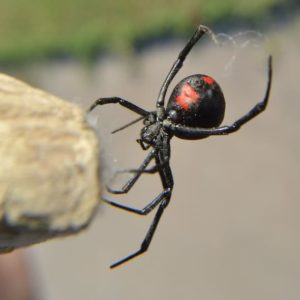
Latrodectus Mactans – Southern Black Widow
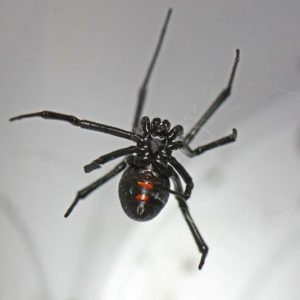
Latrodectus Variolus – Northern Black Widow
Brown recluse spiders in Indiana
As their common name suggests, brown recluse spiders tend to spend most of their lifetime well hidden, out of sight. Even though actual brown recluse sightings are quite rare and their natural range is limited to southern Indiana, south of Indianapolis, these spiders are generally over-reported. Numerous brown spiders that may or may not look similar to the brown recluse are simply considered to be brown recluse sightings.
The “violin” pattern on the back of the spider is the most popular way to identify brown recluses – often leading to misidentifications with other brown spiders that have a violin pattern. Brown recluse spiders have six eyes that are placed in three pairs or dyads, their body is never longer than 3/4 inches, their legs are not hairy and their abdomen does not have any patterns.
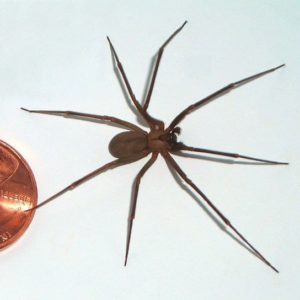
Loxosceles reclusa – Brown Recluse
Big spiders in Indiana
As mentioned, many of the big brown spiders found in Indiana are often misreported as recluse sightings. Below, you can see an overview of the most common big brown spiders you may come across in Indiana – none of these are medically significant. Symptoms of a bite are usually comparable to a bee sting.
The largest spider in Indiana is the wolf spider. Females can reach a body size of almost 2 inches and a leg span of close to 4 inches.
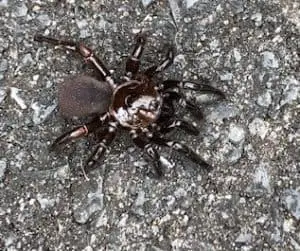
Ummidia – Trap-Door Spider
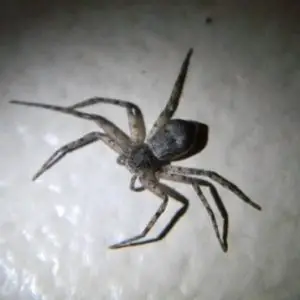
Philodromus – Running Crab Spider
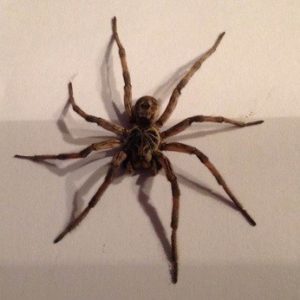
Lycosidae – Wolf Spider
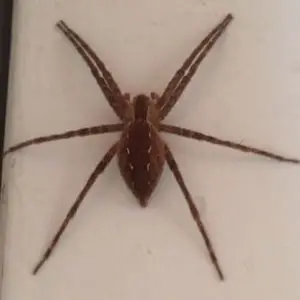
Pisaurina Mira – American Nursery Web Spider
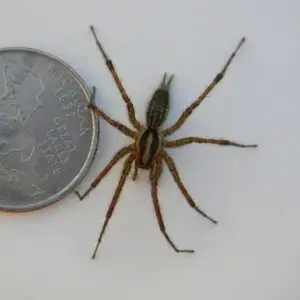
Agelenopsis – American Grass Spider

Dolomedes – Fishing Spider
Other common spiders in Indiana
Many of us are aware that there are a variety of spider species that people in Indiana may find in your garden or on your daily walks. It can be difficult to recognize them all without having knowledge about their identification, the list below can help you make it impossible to determine whether or not they are poisonous.
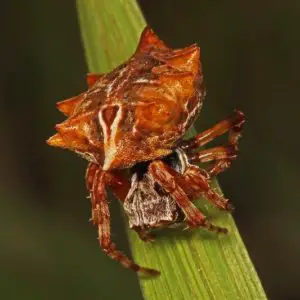
Acanthepeira Stellata – Starbellied Orb Weaver
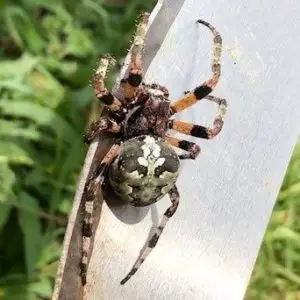
Araneus Bicentenarius – Giant Lichen Orb Weaver
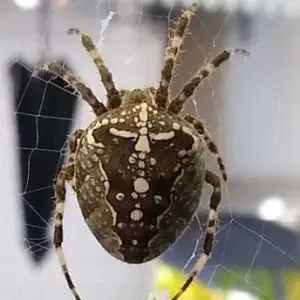
Araneus diadematus – The European Garden Spider
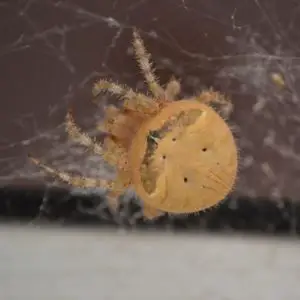
Araneus Gemmoides – Cat-Faced Spider or Jewel Spider
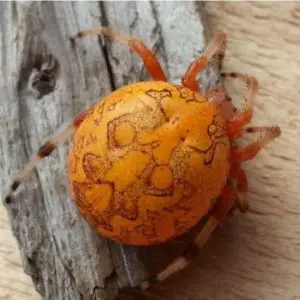
Araneus Marmoreus – Marbled Orb Weaver
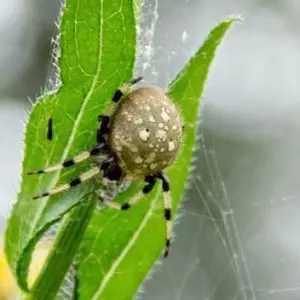
Araneus Trifolium – Shamrock Spider
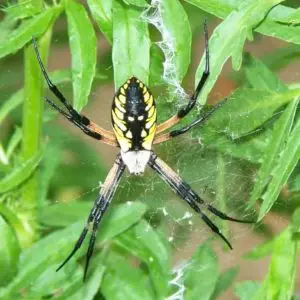
Argiope Aurantia – Black and Yellow Garden Spider
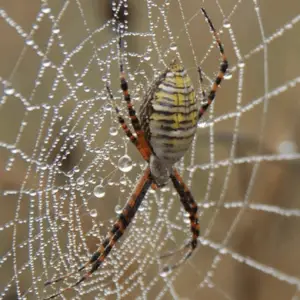
Argiope Trifasciata – Banded Garden Spider
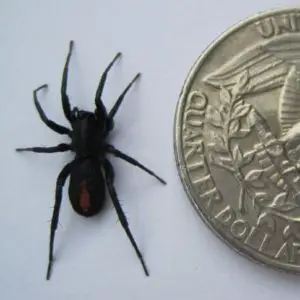
Castianeira Descripta – Red-Spotted Ant Mimic Spider
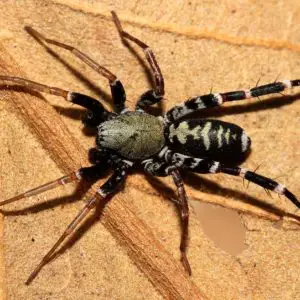
Castianeira Longipalpa – Long-Palped Ant Mimic Sac Spider
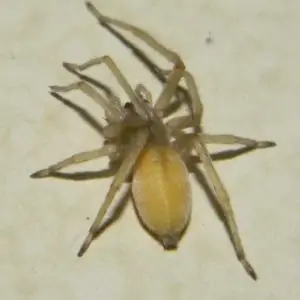
Cheiracanthium Mildei – Northern Yellow Sac Spider
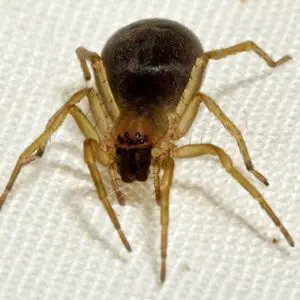
Clubiona – Leaf-Curling Sac Spider
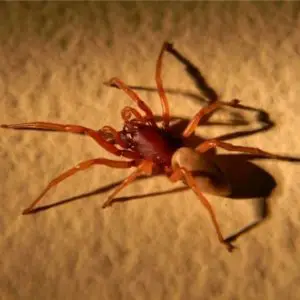
Dysdera Crocata – Woodlouse Spider
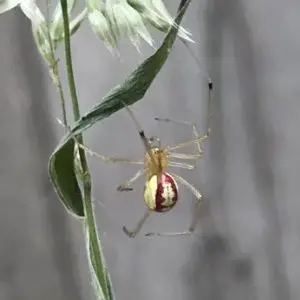
Enoplognatha Ovata – Candy-Striped Spider
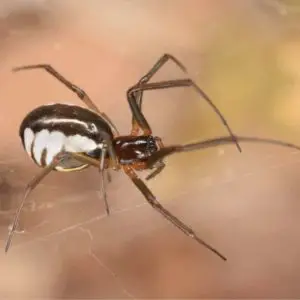
Frontinella Pyramitela – Bowl and Doily Spider
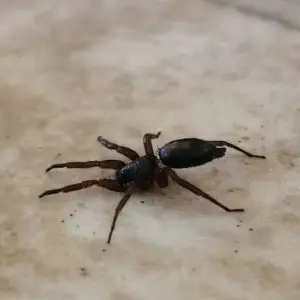
Herpyllus Ecclesiasticus – Eastern Parson Spider
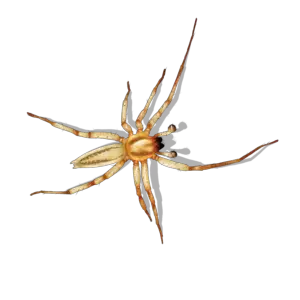
Hibana – Ghost Spider
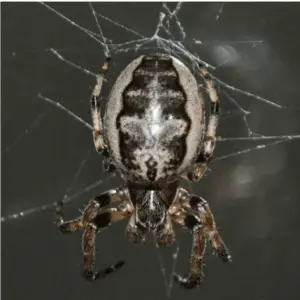
Larinioides Cornutus – Furrow Spider
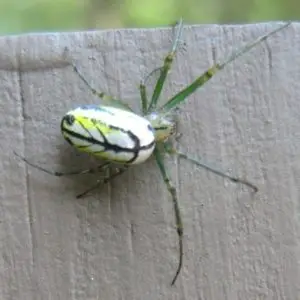
Leucauge venusta – Orchard Spider
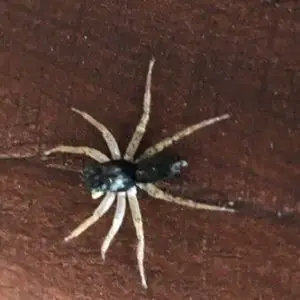
Maevia Inclemens – Dimorphic Jumper
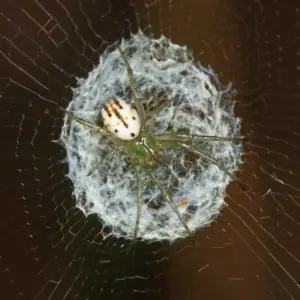
Mangora gibberosa – Lined Orbweaver
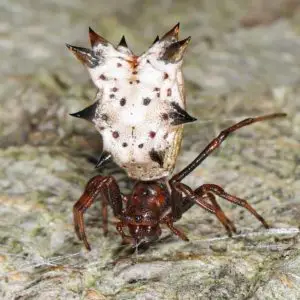
Micrathena gracilis – Spined Micrathena
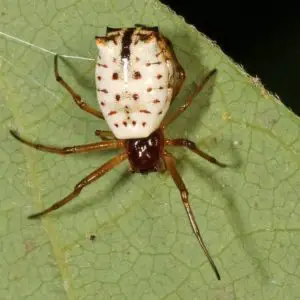
Micrathena mitrata – White Micrathena
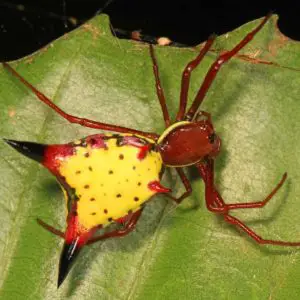
Micrathena Sagittata – Arrow-Shaped Orbweaver
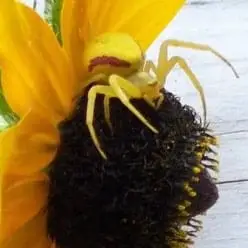
Misumena – Flower Crab Spider
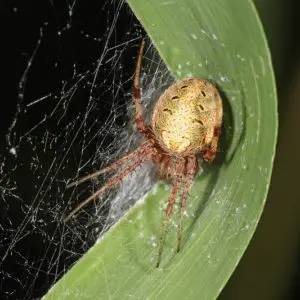
Neoscona Arabesca – Arabesque Orb Weaver
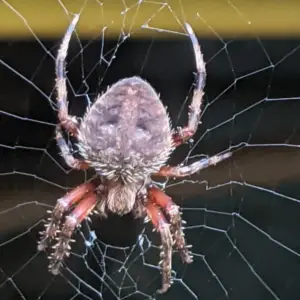
Neoscona crucifera – Spotted Orb Weaver
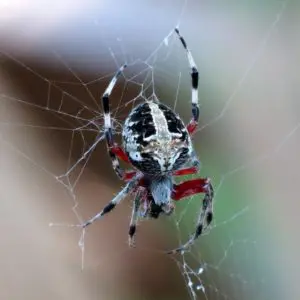
Neoscona domiciliorum – Red-femured Spotted Orbweaver
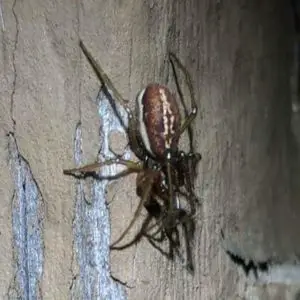
Pachygnatha
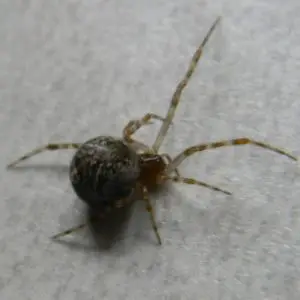
Parasteatoda tepidariorum – The Common House Spider
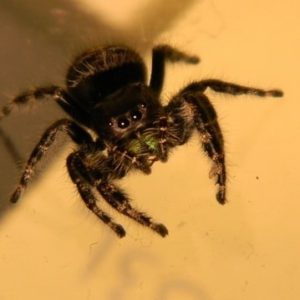
Phidippus audax – Daring Jumping Spider
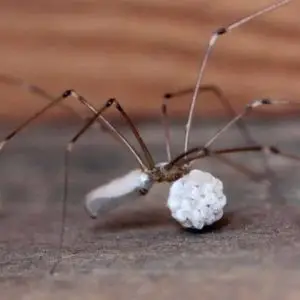
Pholcidae – Daddy Long-Legs or Cellar Spider
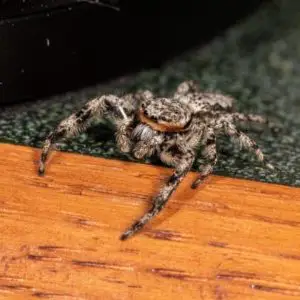
Platycryptus Undatus – Tan Jumping Spider
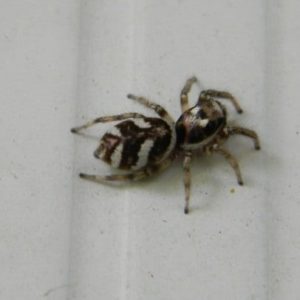
Salticus Scenicus – Zebra Spider
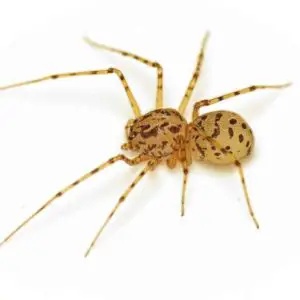
Scytodes Thoracica – Spitting Spider
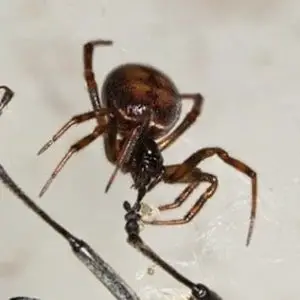
Steatoda Bipunctata – Rabbit Hutch Spider
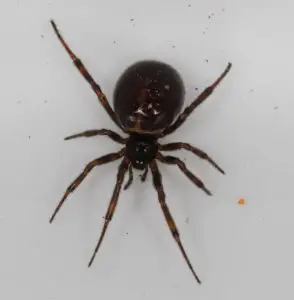
Steatoda borealis
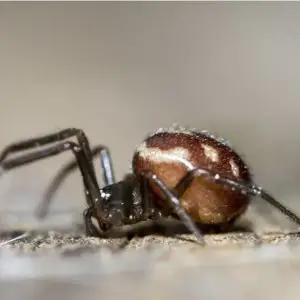
Steatoda Grossa – False Black Widow Spider
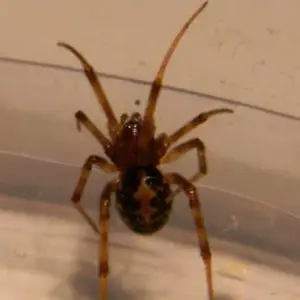
Steatoda Triangulosa – Triangulate Cobweb Spider
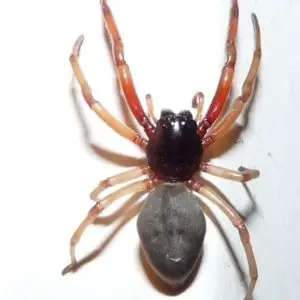
Trachelas Tranquillus – Broad-Faced Sac Spider
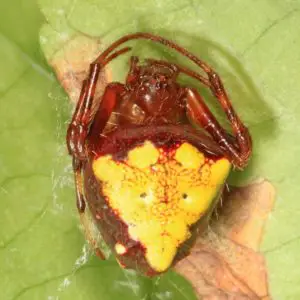
Verrucosa Arenata – Arrowhead Spider
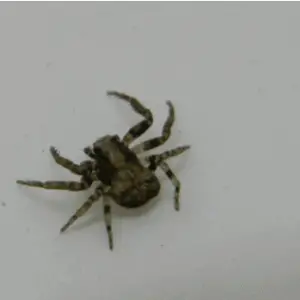
Xysticus – Ground Crab Spider
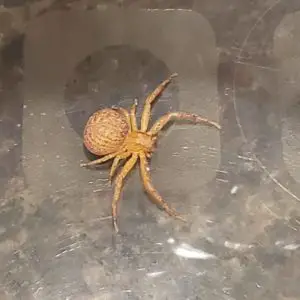
Xysticus Funestus – Deadly Ground Crab Spider
Indiana spider identification
If you have found a spider in Indiana that is not on this article or that you cannot identify, head over to our spider identification page. We have built a spider identification tool where you can answer a couple of questions and the tool will show you a list of potential matches. If that still fails to identify your spider, you can take a photo of your Indiana spider and upload it to that page. Our experts will give their best to identify the spider for you and get back to you as soon as possible.
